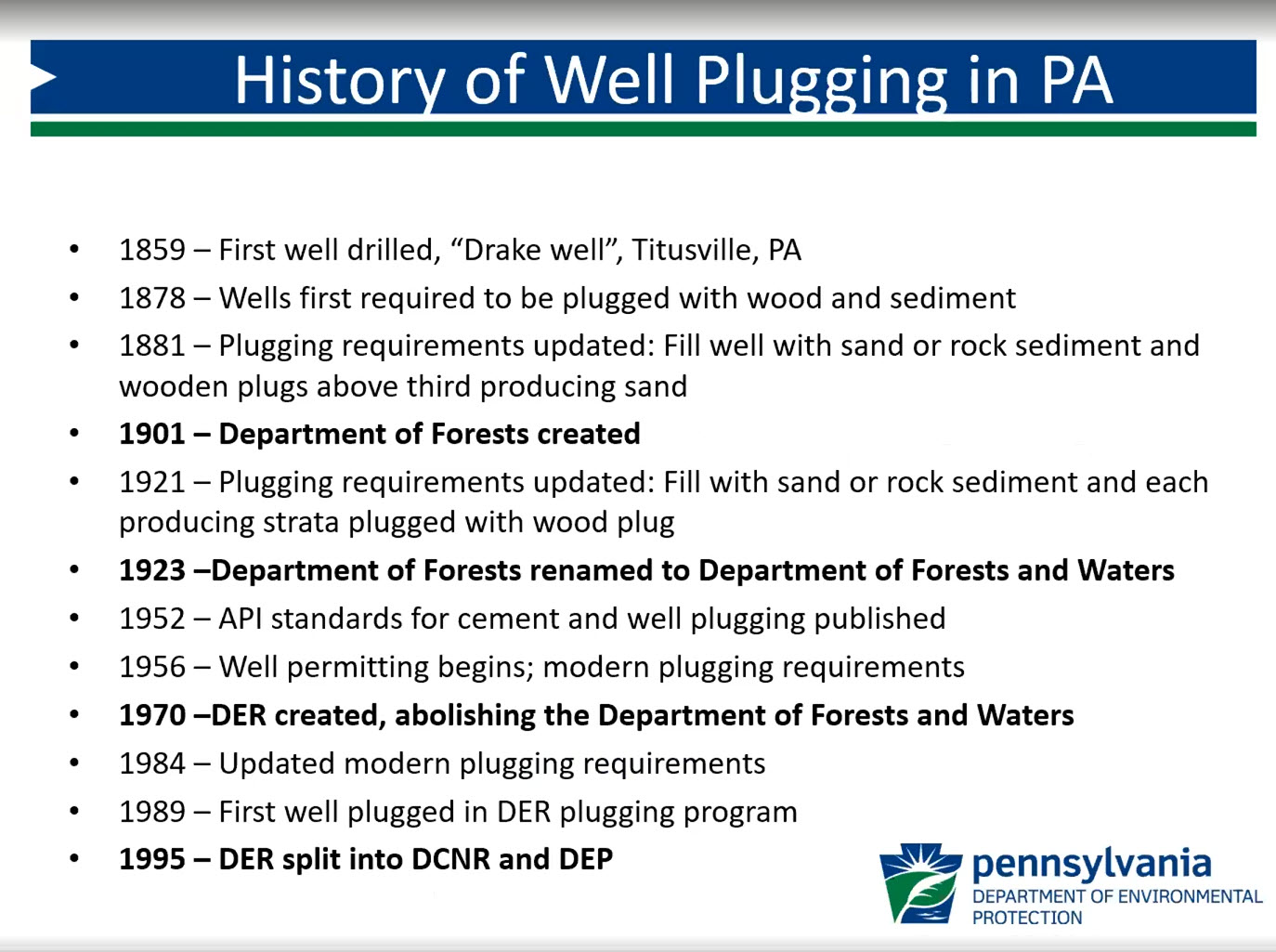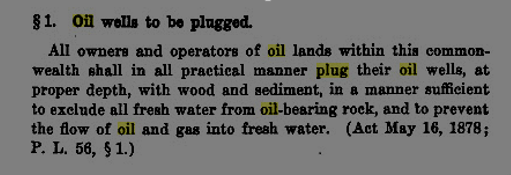

In western Pennsylvania Oil wells are usually less than 1000 feet deep. Medina (conventional) gas wells are about 5000 feet deep. Newer Marcellus and Utica gas wells may reach a depth of 6000 feet vertically and have multiple legs of an additional 5000 feet or more. A properly plugged well requires that the gas, oil and coal strata be isolated from one another and from the fresh water aquifers. To accomplish this, the well casing must be removed and the well bore cleaned. The bottom of the well is then filled with a non-porous material. In crucial portions of the well (such as gas and oil formations, coal seams and fresh water aquifers) a cement plug is needed to seal off those zones from each other. Aggregate material is placed between the plugs. This process is expensive. The cost depends on the depth of well, its location and any problems associated with the well bore. Cost can range from 25,000 to 1 million dollars for a shallow well and estimates are 1 to 5 million dollars or more for a shale gas well.

The law says that if a well is inactive for one year the owner/operator is required to plug the well. So in theory the well owner is responsible for plugging the well when it is no longer productive. In reality most wells end up as abandoned or orphan wells. From an environmental perspective,the boom and bust cycle of the oil industry typically results in something like the following.
During the boom period oil prices are high and many wells are drilled. As these wells come online supply outpaces demand. Wells begin to lose their productivity, they are sold off to smaller companies with fewer resources who work on a lower profit margin. As the cycle continues toward bust oil prices drop and the wells are owned by companies with few assets. At this stage unproductive wells are abandoned. The well owners have so few resources that even if the state wants to it can't force the owner to plug the wells. In the end the abandoned wells eventually become orphaned making it the state's (read that as the taxpayers') responsibility to plug the wells.
Part of the problem is that drilling laws require such a small bond be paid during the permitting process (Boom Stage) that owners are willing to just forfeit the bond during the Bust Stage. Large companies who want to stay on the good side of DEP do plug abandoned wells. But they a rare breed.
Oil and Gas Well Plugging in Pennsylvania: The Regulatory Landscape and Opportunities for Reform February 2025
At the present time Act 13 of 2012 contains the following language (blue text below):
"Act 13 increases well bonding requirements, which are currently established at $2,500 per well or $25,000 for a blanket bond. Bond amounts shall be established based on well-bore length and number of wells operated, as follows:
For wells with total well bore lengths less than 6,000 feet:
For wells with total well bore lengths 6,000 feet or greater:
If you do the math, assume that the driller will take the MOST expensive price model:
Good business economics dictate that the least expensive path is to just walk away from the bond. In effect the state is making it more profitable for the well owner to abandon the well.
The following FracTracker article indicates the situation is much worse. Abandoned Wells in Pennsylvania: We’re Not Doing Enough
Prior to modern plugging methods, Pennsylvania allowed (required) wells to be plugged by forcing a tapored piece of wood into the well bore to plug the well.This process is locally known as the "brush plugging" method.
It's not a new problem. Below is a clip from a 1878 PA Law about well plugging.
